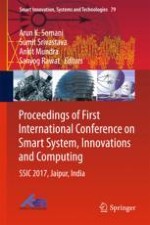The edited volume contains original papers contributed to 1st International Conference on Smart System, Innovations and Computing (SSIC 2017) by researchers from different countries. The contributions focuses on two main areas, i.e. Smart Systems Innovations which includes applications for smart cities, smart grid, social computing and privacy challenges with their theory, specification, design, performance, and system building. And second Computing of Complex Solutions which includes algorithms, security solutions, communication and networking approaches. The volume provides a snapshot of current progress in related areas and a glimpse of future possibilities. This volume is useful for researchers, Ph.D. students, and professionals working in the core areas of smart systems, innovations and computing.
